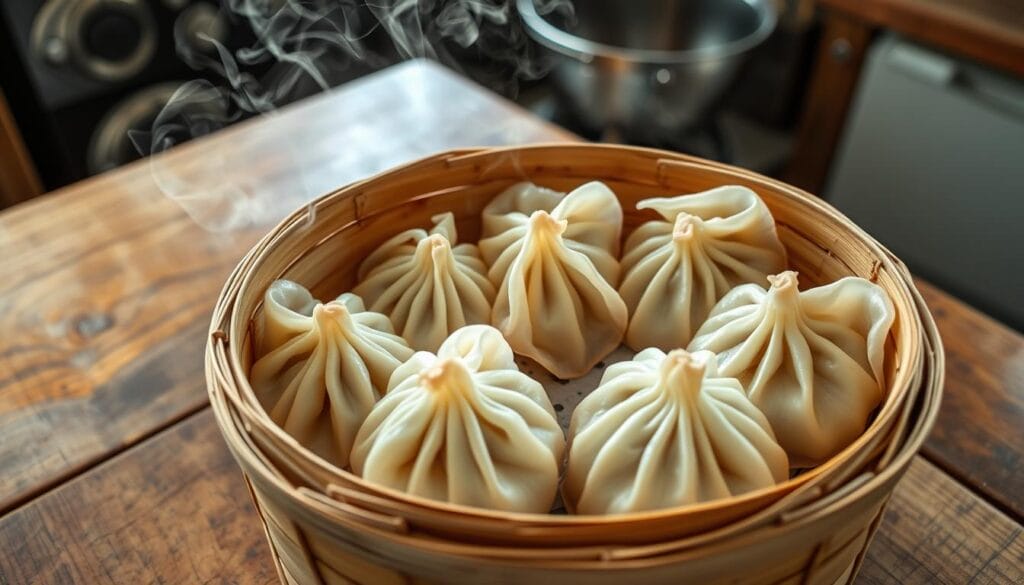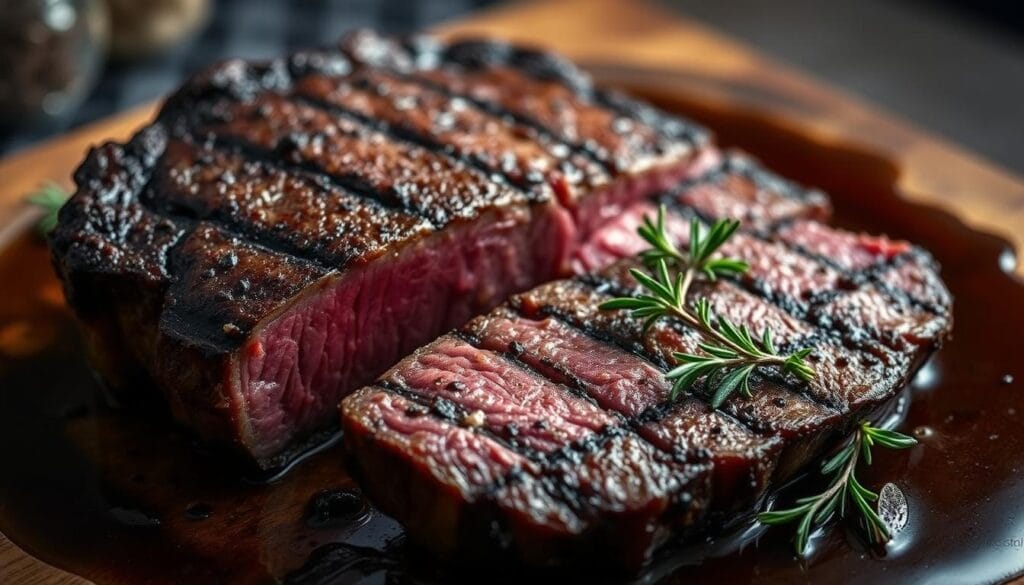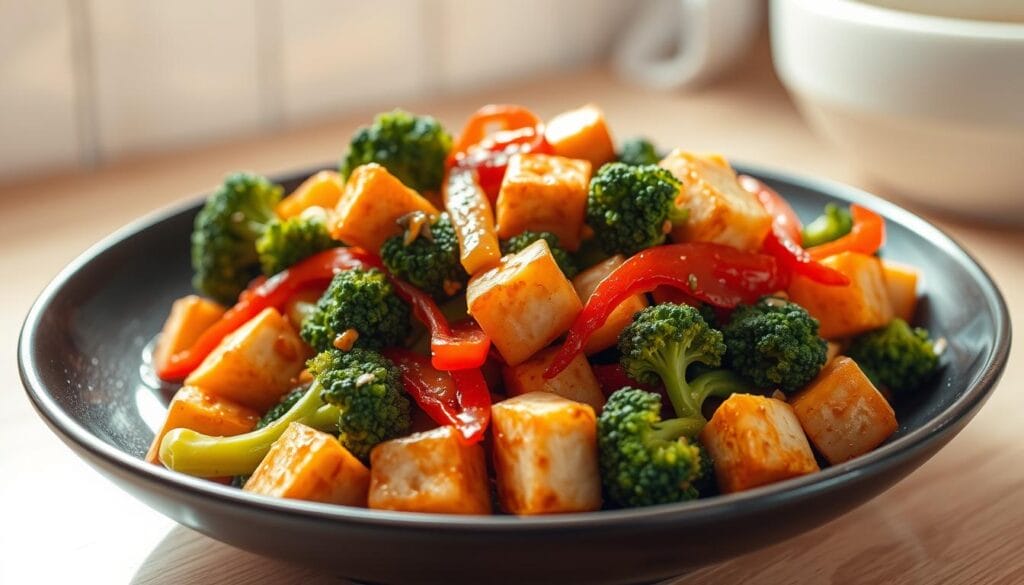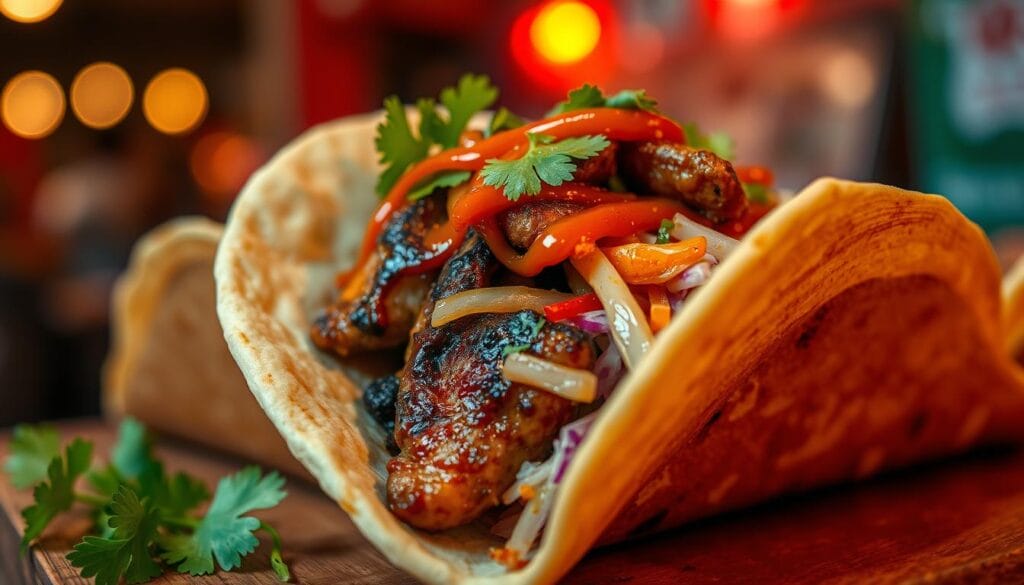Did you know these amazing soup dumplings come from over 1,800 years ago? A doctor named Zhang Zhongjing made them around 206 B.C. in the Han Dynasty.
These delicate dumplings have a special magic. They have a rich, gelatinous broth inside. When steamed right, this broth turns into liquid gold that bursts with flavor.
I’m excited to share my secrets for making these in your kitchen. These aren’t just any dumplings. They’re edible art that needs patience and skill.
In this guide, I’ll show you how to make perfect soup dumplings. You’ll learn the traditional ways that have been passed down for generations. Soon, you’ll be making restaurant-quality treasures that will wow your loved ones.
Introduction to Xiao Lang Bao
Ever wondered why Xiao Lang Bao stands out among dim sum? These dumplings are not just any food. They are a work of art that needs skill and patience to make.
What makes these Shanghai dumplings unique is their design. They have a meat filling and a gelatinous broth that turns into liquid gold when steamed. This broth melts during cooking, giving you that special “soup” taste.
I find it amazing how these dumplings show the best of Chinese cooking. Their pleated tops are perfectly twisted. Their wrappers are thin but strong, keeping the filling safe inside.
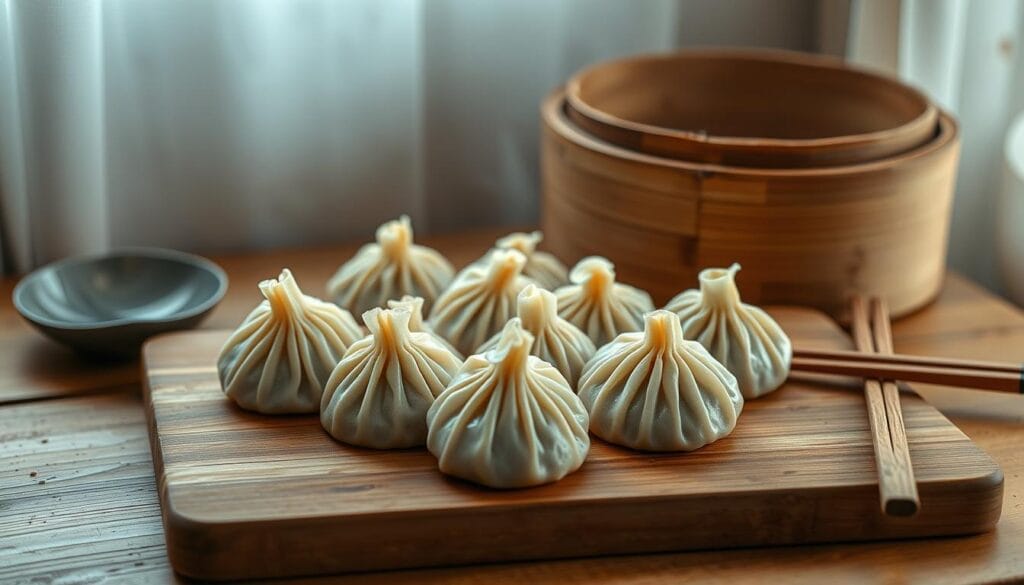
Enjoying homemade xiaolongbao is a special ritual. You lift the dumpling with chopsticks, take a small bite to let steam out. Then, you sip the hot broth before eating the whole dumpling.
Many like to dip their dumplings in black vinegar with fresh ginger. This adds a tangy flavor that goes well with the rich broth.
| Feature | Xiao Lang Bao | Regular Dumplings | Wontons |
|---|---|---|---|
| Broth Content | Hot liquid soup inside | No broth | Served in broth |
| Wrapper Thickness | Very thin, delicate | Medium thickness | Thin but sturdy |
| Pleating Style | 18+ pleats, spiral top | Simple crimped edges | Gathered corners |
| Eating Method | Bite and sip carefully | Eat whole | Eat with spoon |
These Shanghai dumplings are loved for their doughy texture and rich fillings. The mix of tender meat and flavorful broth makes for a memorable meal. It’s why they’re famous all over the world.
Ingredients for Xiao Lang Bao
Creating a great Xiao Lang Bao recipe starts with knowing the key ingredients. I’ve listed the ingredients into three groups. This helps you make Chinese steamed buns that are just like your favorite restaurant’s.
The dumpling wrapper is the base of a good pork dumpling. You need high-quality all-purpose flour. Warm water and a pinch of salt are added to make the dough tender yet strong.
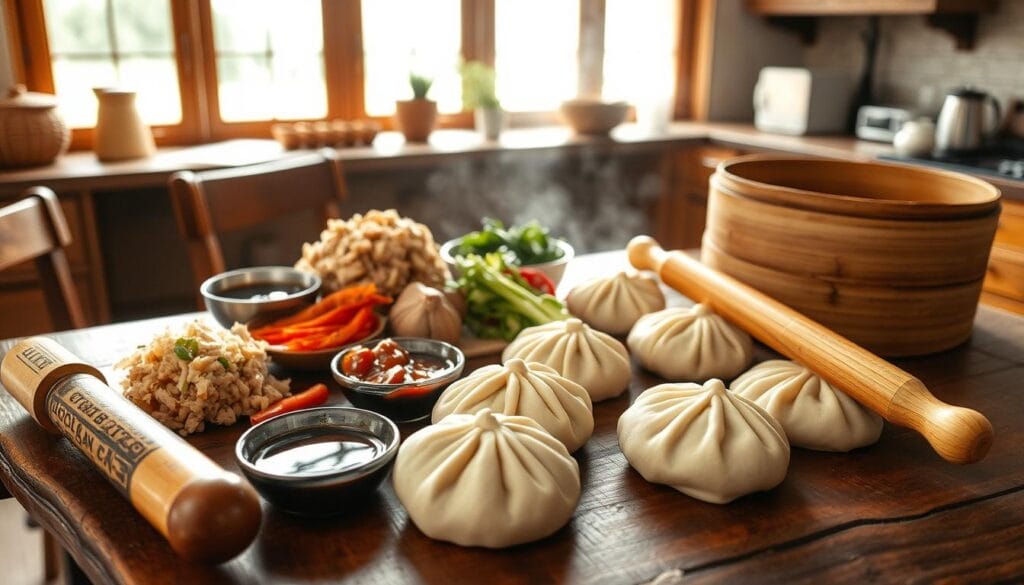
The filling is the heart of these dumplings. Ground pork is the main protein. But it’s the aromatics that make them special. Fresh ginger adds warmth, and scallions give a mild onion taste.
Ingredients for the filling include:
- 1 pound ground pork
- 2 tablespoons fresh ginger, minced
- 3 scallions, finely chopped
- 2 tablespoons soy sauce
- 1 tablespoon Shaoxing wine
- 1 teaspoon sesame oil
- 1/2 teaspoon white pepper
- 1 teaspoon sugar
The soup inside the dumplings is what makes them unique. I make a rich stock with pork and chicken bones. This stock is chilled until it’s firm, then it melts when steamed, creating a burst of broth.
For the stock, you’ll need:
- 2 pounds pork bones
- 1 pound chicken bones
- 1 onion, quartered
- 3 slices fresh ginger
- 2 tablespoons unflavored gelatin
Using high-quality ingredients is key to making authentic Chinese steamed buns. Fresh ingredients make a big difference. Good soy sauce and fresh ginger are essential.
Keep cornstarch ready to adjust the texture if needed. It helps keep the filling together and prevents the dough from getting soggy.
Step-by-Step Guide to Making Xiao Lang Bao
I’ll show you how to make these amazing soup dumplings, just like Din Tai Fung. First, prepare your gelatinous stock a day before. Simmer pork and chicken bones with ginger and scallions for four hours. This makes a rich broth. Chill it overnight until it’s firm enough to dice into small cubes.
Next, make the wrapper dough. Mix flour with warm water slowly. Knead until it’s smooth and elastic. Let it rest for 30 minutes. This makes the dough perfect for wrapping.
For the dumpling soup filling, mix ground pork with soy sauce, rice wine, and the jellified stock cubes. Mix gently so the stock pieces stay whole.
The pleating technique takes patience. Roll each wrapper thin, put the filling in the center, and make 18-20 pleats. Seal it tightly to prevent leaks during steaming.
Steam the dumplings for 8-10 minutes over medium-high heat. The timing is key. The wrappers become translucent, and the jellified stock turns into hot, savory soup inside.
Serve them right away with black vinegar and julienned ginger. Each bite is a burst of flavorful broth. It’s what makes these dumplings so special. Keep practicing this traditional technique.
FAQ
What makes Xiao Lang Bao different from regular pork dumplings?
Xiao Lang Bao has a special soup inside. This soup melts when you bite into it, releasing hot, savory liquid. The secret is chilled, jellified stock in the filling that turns back into soup during steaming.
How do I prevent the dumpling wrappers from breaking during steaming?
Get the dough right and pleat well. Your dough should be smooth and elastic. Roll each wrapper evenly, not too thin or too thick. Also, steam at a moderate temperature to avoid bursting.
Can I make the gelatinous stock ahead of time for my Shanghai dumplings?
Yes, making the stock a day ahead is best. Simmer pork and chicken bones with aromatics for hours. Then, refrigerate until firm. This stock can be stored for up to 3 days, essential for the soup-filled center.
What’s the proper way to eat xiaolongbao without burning my mouth?
Lift the dumpling with chopsticks and take a small nibble at the top. This releases steam. Then, sip the hot broth before eating the dumpling. Dipping in black vinegar with ginger is also popular.
How many pleats should authentic Chinese steamed buns have?
Traditional Xiao Lang Bao should have 18-20 pleats. This technique keeps the dumpling sealed and gives it a unique look.
Can I freeze homemade xiaolongbao for later use?
Yes, you can freeze uncooked Xiao Lang Bao. Freeze them solid, then bag them. Steam them frozen, adding a few extra minutes. But they taste best fresh.
What type of flour works best for the dumpling wrapper dough?
Use high-quality all-purpose flour for the best wrappers. It has the right balance of elasticity and tenderness. Avoid cake or bread flour for the wrong texture.
How do I know when my Din Tai Fung style dumplings are properly cooked?
Cooked Xiao Lang Bao have translucent, slightly glossy wrappers. They should feel firm but not hard. Steam for 12-15 minutes in a hot steamer. They should hold their shape without leaks.
What’s the best way to store leftover dumpling soup filling?
Store leftover pork filling in the fridge for up to 2 days. Keep it covered with fresh ingredients like ginger and scallions. Use within 24 hours for the best texture and safety.
Why do my homemade soup dumplings sometimes leak during steaming?
Leaking is often due to bad sealing or overfilling. Don’t overfill and ensure tight pleating. Also, check your steamer for too much condensation.

